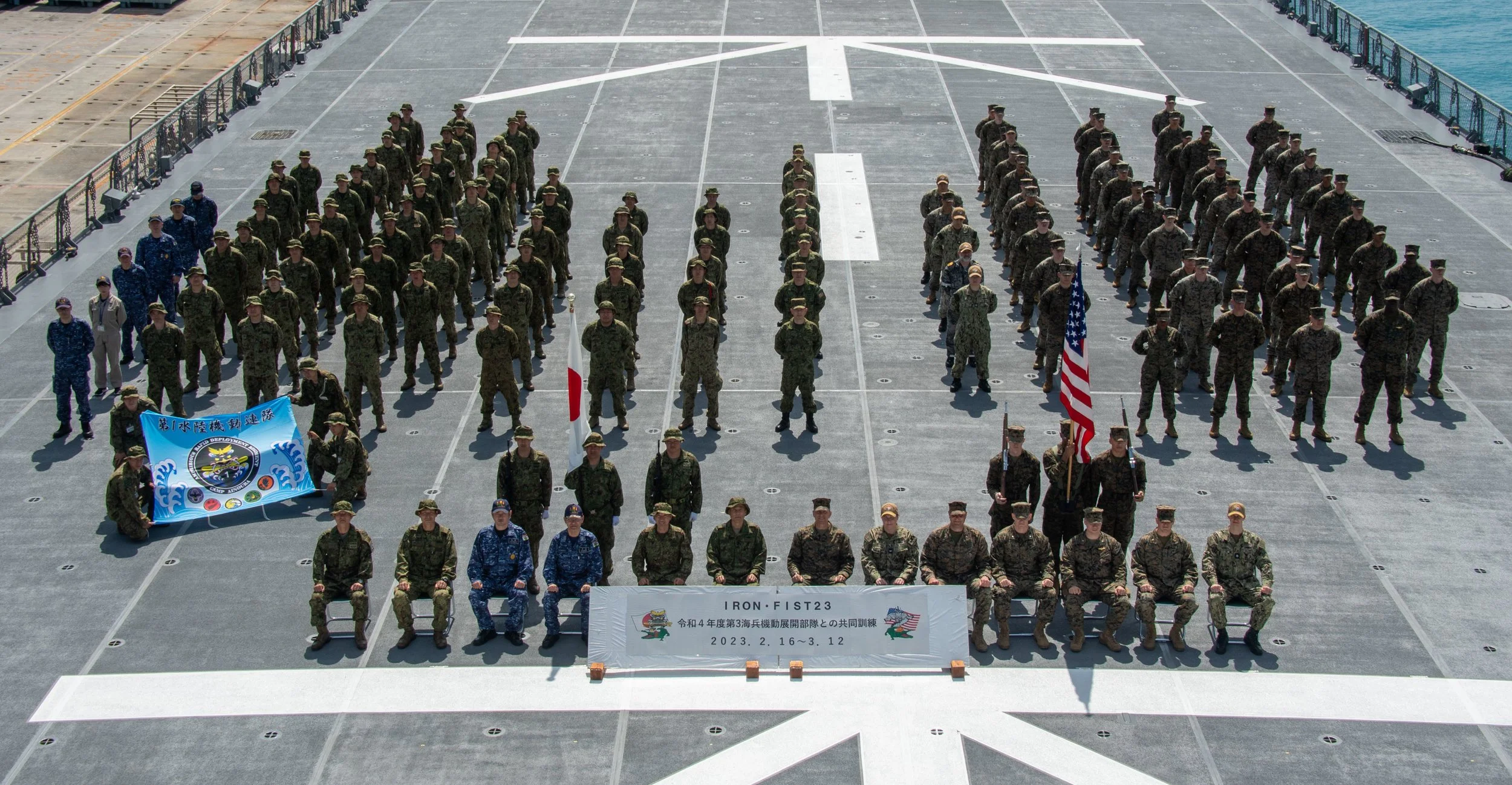US Marines, Japanese forces conclude first Japan-based Iron Fist Exercise
Members of the Japan Self-Defense Force and U.S. Marines with the 31st Marine Expeditionary Unit recently completed the first Japan-based Iron Fist exercise, an annual exercise designed to increase interoperability and strengthen relationships between the U.S. Marine Corps, the U.S. Navy, the Japan Ground Self-Defense Force, and the Japan Maritime Self-Defense Force. This iteration of Iron Fist included ships from the JMSDF for the first time, which conducted rehearsals and integration with the 31st MEU and 1st Amphibious Rapid Deployment Regiment throughout the exercise.
Iron Fist 23 demonstrated the strengthening of bilateral response capabilities with the JMSDF through conducting combined amphibious operations including counter-piracy and search and rescue operations. The JMSDF tank landing ship JS Osumi (LST-4001) and the America Amphibious Ready Group swapped landing craft, air cushions, conducted combined amphibious reconnaissance, and performed a combined amphibious landing on the island of Tokunoshima during the exercise.
The final integrated event was an amphibious landing at Okinawa between the JMSDF, JGSDF, and U.S. Marines and Sailors, which simulated a combined response to provide security in a crisis. Among several tactical activities, this event featured a bilateral mass casualty evacuation scenario.
The mass casualty evacuation scenario began with a simulated emergency medical evacuation request in the Camp Hansen training area. Casualties were transported in a JGSDF ambulance, with U.S. and JGSDF medical personnel performing in-route care, to a helicopter landing zone where they were evacuated by a JGSDF CH-47 helicopter from the JS Osumi for a higher echelon of care aboard the amphibious assault ship USS America (LHA-6).
“The ability of our quick, seamless bilateral medevac procedures demonstrates our crisis response capabilities,” said U.S. Navy Lt. Cmdr. Chandler Getz, the 31st MEU surgeon. “Combined medical operations allow us to learn best practices and integrate as a more robust and capable united crisis response force.”
The coordination between the JMSDF, JGSDF, and U.S. Marines and Sailors to perform integrated logistics and medevac procedures demonstrates the crisis response capabilities strengthened by the U.S.-Japan security alliance.
“I was impressed with what I saw,” said U.S. Marine Corps Col. Matthew Danner, the 31st MEU commanding officer. “What you are seeing is cooperation and partnership in a complex situation between U.S. Marines and the JSDF as a whole. Our combined crisis response capabilities continue to enhance deterrence and build on security in the region.”
This bilateral exercise between the two countries continues to demonstrate the commitment of U.S. and Japan forces to maintain a free and open Indo-Pacific. Iron Fist is just one of several bilateral and multilateral exercises in which U.S. and Japan forces participate each year. The 31st MEU and 1st ARDR are partnered for participation in Talisman Sabre, to be conducted in Australia in July 2023.
* * * * *
Photo caption: Marines assigned to the 31st Marine Expeditionary Unit, Sailors assigned the forward deployed amphibious assault carrier USS America (LHA 6), and members of the Japan Maritime Self-Defense Force and Japan Ground Self-Defense Force pose for a photo during the closing ceremony for Exercise Iron Fist aboard the Japan Maritime Self-Defense Force landing ship tank JS Osumi (LST-4001) while moored in Okinawa, Japan, Mar. 12

